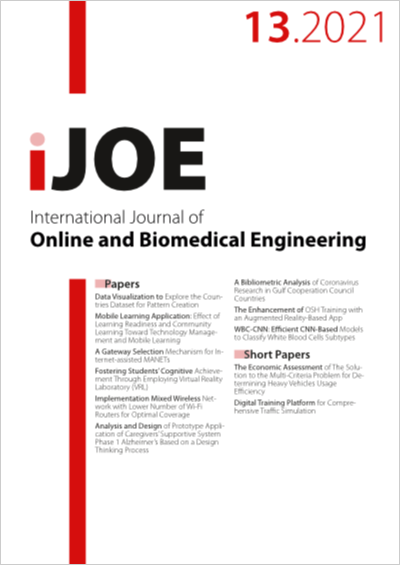Fostering Students’ Cognitive Achievement Through Employing Virtual Reality Laboratory (VRL)
DOI:
https://doi.org/10.3991/ijoe.v17i13.24529Keywords:
titration, virtual reality, virtual reality laboratory, cognitive achievementAbstract
Titration was one of the chemistry concepts that require practicum in the learning process. But, many obstacles in the real laboratory such as lack of material, tools, and times made the real laboratory less optimal. These lacks could be solved by used Virtual Reality (VR) technology. VR made a big contribution to the education sector. One of them was implementing it in the development virtual laboratory. Virtual laboratory plays an important role in the learning process. It was possible to manipulate 2D (virtual world) objects similar to 3D (real world) objects. This study developed Virtual Reality Laboratory (VRL) to analyze its characteristics, quality, and impact on students' cognitive achievement. A research and development (R&D) method with a post-test design was used in this study. The subjects of this study were 102 high school students in class XI. The samples were divided into 3 classes, namely CC (real laboratory); EC-1 (VRL); and EC-2 (real laboratory and VRL). The results of students' cognitive achievement were analyzed using ANOVA and it was found that there were significant differences in students' cognitive achievement in the three classes. Students who used VRL had higher cognitive achievement than students who used real laboratory. VRL also received excellent grades from chemistry educators. Thus VRL is very useful as a supplement in the teaching and learning process.
Downloads
Published
2021-12-06
How to Cite
Ernawati, D., & Ikhsan, J. (2021). Fostering Students’ Cognitive Achievement Through Employing Virtual Reality Laboratory (VRL). International Journal of Online and Biomedical Engineering (iJOE), 17(13), pp. 44–58. https://doi.org/10.3991/ijoe.v17i13.24529
Issue
Section
Papers
License
Copyright (c) 2021 dian ernawati

This work is licensed under a Creative Commons Attribution 4.0 International License.


